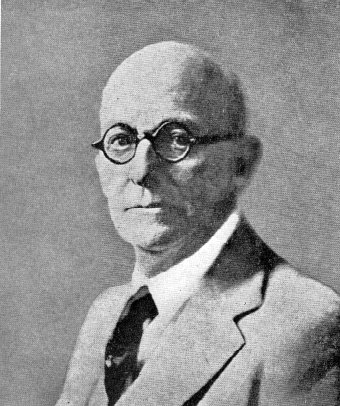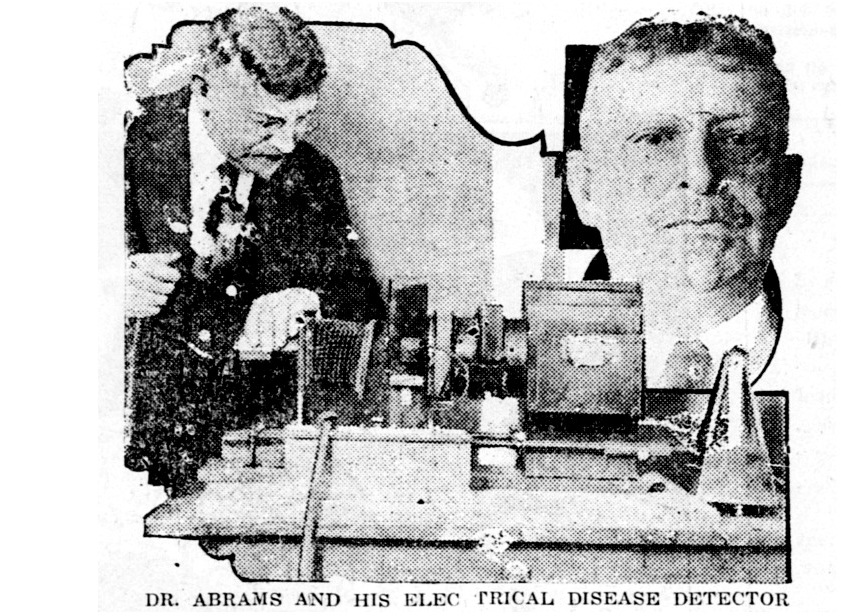To start with a definition -- Radionics is an art by which diagnostic data is obtained through use of equipment which enables a trained operator to detect and measure differential radiations by the different organs and tissues of the body. Other uses of the equipment include detecting, ascertaining the location in the body, and measuring the amplitude of various types of pathology and adverse conditions of tissue, and similarly to detect, locate and measure any foreign micro-organisms, parasites, and other irritant factors that contribute to disease. Also the use of the equipment for resonance tests by which the effect of any proposed remedy such as a vitamin, mineral, homeopathic substance or nutritional concentrate can be predetermined with regard to any organ, system or function of the body. Last but not least, the administration of subtle forms of energy for treatment.
These treatment energies are of sufficiently low power to approximately match the level of amplitude of the body's own nerve currents; their unique feature, which differentiates them from all other forms of electrical or electronic therapy, is that they can be modified through a very wide range of tuning so as to selectively affect any organ, gland, or type of tissue desired -- either to stimulate under-active function or inhibit over-active function. The treatment energies can also be tuned to neutralize or cause the body to excrete harmful deposits or accumulations of irritant substances or microorganisms, with specific tunings for each different substance or type of micro-organism. The effects of or results from the use of radionics varies from outstanding and even phenomenal success, through a scale of fair or mediocre results, down to a lack of benefit, depending entirely on the equipment used, the techniques applied, and the level of skill and understanding of the operator. It is the purpose of this series to give an outline of the history of radionics, the different types of equipment that have been developed and used in this field, their advantages and weak points, and to discuss in condensed form both the benefits that have been obtained from radionics and the problems involved in its use.
To understand the origin of radionics, one must first look into its predecessor, E.R.A. These letters stand for the Electronic Reactions of Abrams, Radionics is not the same as E.R.A., but is an outgrowth of it. Without E.R.A. there would probably [2] have been no radionics.
THE RADIATIONAL NATURE OF DISEASE
The originator of E.R.A. was Dr. Albert Abrams, M.D. of San Francisco, California. He was born Dec. 8, 1865 and died Jan. 13, 1924. He obtained his medical education at University of Heidelberg in Germany -- the country which at that time led the world in medical advancement. He took postgraduate courses in London, Berlin, Paris and Vienna. In fact he was one of the most highly trained medical physicians of his time. He held numerous posts of honor; there were many publications to his credit; and he was held in the highest respect and admiration by the medical profession of the United States up until the time that he propounded the theory of E.R.A. That theory was so far in advance of the thinking of his period, that he then became a lonely figure in the medical profession of the United States, though the profession in England was more open-minded in its approach to E.R.A.
Late in the last century, when Dr. Abrams was taking post-graduate work at University of Heidelberg, he studied under a Professor De Sauer, who lectured extensively on the concept of the radiational nature of disease. Dr. Abrams was so impressed with those lectures that upon his return to California he embarked on an extensive series of experiments to test the validity of Professor De Sauer's theories. The results of numerous experiments convinced him that those theories were correct. The mention two of the experiments as illustrative examples:
- A test-tube of TB bacillus culture, held by means of adhesive tape to a location over the 5rd and 4th dorsal spinal segments of a healthy person, produced blanching of the face that was typical of a tubercular. Upon removal of the test-tube of culture, blanching ceased.
- Dr. Abrams diagnosed tumors by a characteristic dull sound elicited by percussion upon certain areas of the patient's abdomen. Patients without tumors did not manifest the dull sound.
After diagnosing a tumor in a patient in this manner, the growth was removed by surgery, and then strapped to the forehead of a healthy person. Thereupon, that individual exhibited the same diagnostic dull sound upon abdominal percussion, that had manifested in the patient from whom the tumor had been taken! Upon removal of the tumor from the healthy person's forehead, the dull sound disappeared.
The phenomena involved in these and numerous other experiments, pointed directly to the radiational nature of disease. The test-tube of TB bacillus radiated something into the healthy subject's body, that induced a TB symptom. Radiation from the tumor tissue produced a diagnostic signal indicative of a tumor, so long as the tumor tissue was within radiational range of the healthy subject. The evidence from Dr. Abrams long series of experiments was so overwhelming, that he thoroughly accepted De Sauer's concept, [3] and initiated a program of research and development to produce equipment for practical use of that concept.
ELECTRONIC REACTIONS OF ABRAMS
The first book devoted exclusively to the development of E.R.A. was Dr. Abrams' "New Concepts in Diagnosis and Treatment", published about 1916. This followed very closely upon Spondylotherapy editions referring to E.R.A. -- the 5th edition and possibly an earlier edition. Many of the preliminary experiments which led to the development of E.R.A. are detailed in the book "New Concepts in Diagnosis and Treatment".
In accordance with the results of over a decade of experiments, Dr. Abrams propounded two basic hypotheses:
- That all matter radiates, and that the characteristics of the radiations from any type of matter are dependent upon the molecular constituents of the material involved. (Author's note -- this means that every different element or compound has a radiation differing from the radiation emitted by any other element or compound.)
- That the radiations emitted by the different types of matter (and by the different organs of a living organism) can be detected, selectively differentiated, and the radiational amplitudes measured, by a trained operator using relatively simple equipment.
The first hypothesis was in contradiction to scientific principles as understood by the scientific community of Abrams' time. It was believed then that only the so-called radio-active elements radiated, such as radium, uranium, etc. It was not until after the advent of atomic physics that science evolved to the point where it recognized that all matter radiates. See any scientific text on "magnetic resonance", including two types: NMR (neutron magnetic resonance), and EMR (electromagnetic resonance). In scientific encyclopedias, one can now look up these subjects and see diagrams and descriptions of elaborate laboratory set-ups that prove the existence of radiation from non-radioactive elements. These laboratory set-ups involve the use of extremes of temperature and pressure (or vacuum), in conjunction with element samples and electrical circuits. There is a different set-up for each element involved. The set-ups are cumbersome and expensive; but at least they prove the underlying principle, first propounded in modern times by Dr. Albert Abrams.
The second hypothesis has not received any general acceptance by the scientific community as yet, although it is self-evident to every successful radionics operator, and to any accomplished radiesthesist.
(To be continued)
Continue with "The History and Development of Radionics" (Part II)

References
- Abrams, Albert. New Concepts in Diagnosis and Treatment: Physico-clinical Medicine, the Practical Application of the Electronic Theory in the Interpretation and Treatment of Disease: with an Appendix on New Scientific Facts. San Francisco, Calif: Philopolis Press, 1916. Print. [Digital: <http://catalog.hathitrust.org/Record/001588073>; reprints are available through BSRF in our classic xerographic format: <#B0210, "New Concepts in Diagnosis and Treatment">]
- Abrams, Albert. Human Energy. San Francisco: Philopolis Press, 1914. Print. [Digital: <http://catalog.hathitrust.org/Record/008904901>; reprints are available through BSRF in our classic xerographic format: <#B0211, "Human Energy">]
- Abrams, Albert. Spondylotherapy: Physio and Pharmacotherapy and Diagnostic Methods Based on a Study of Clinical Physiology. San Francisco: Philopolis Press, 1914. Print. [Digital: <http://catalog.hathitrust.org/Record/002089090>; reprints are available through BSRF in our classic xerographic format: <#B0177, "Spondylotherapy">]
An introductory review of Abrams and his work can be found in
"ERA: Electronic Reactions of Abrams" (#B0025).

